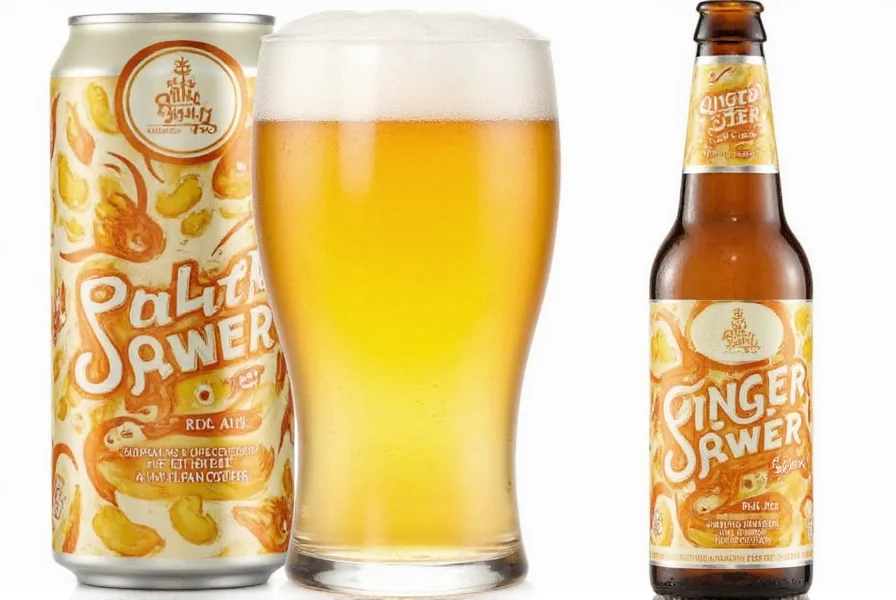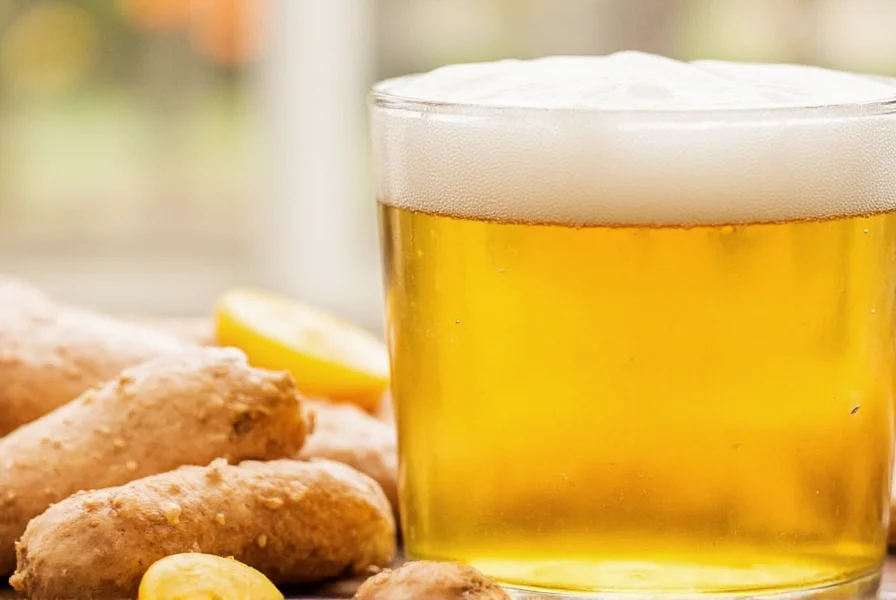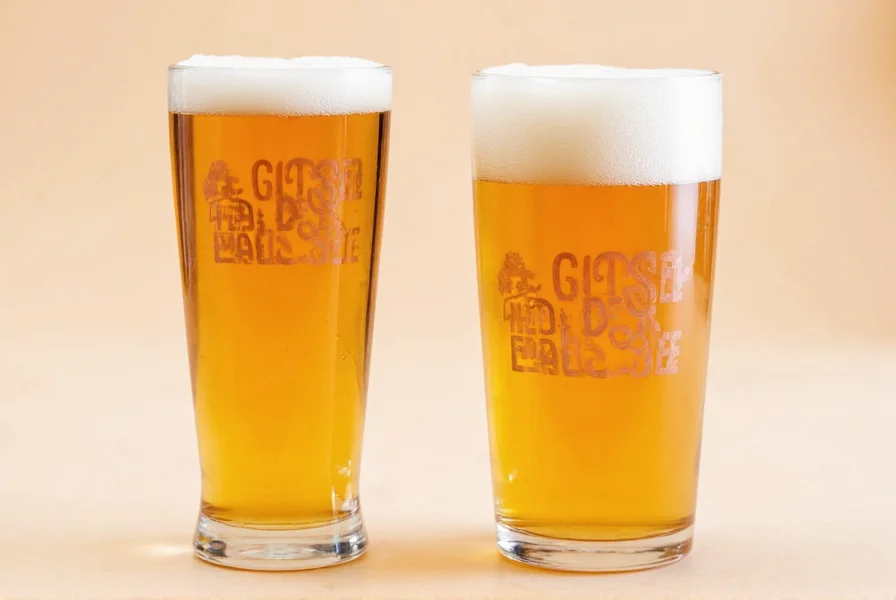Ginger pale ale represents an innovative fusion in the craft beer landscape, blending the familiar citrus and pine notes of American pale ale with the distinctive spicy warmth of ginger. This style has gained popularity among craft beer enthusiasts seeking complexity without venturing into extreme flavor territories. Unlike traditional ginger beers which often feature ginger as the dominant flavor, ginger pale ale maintains the essential character of a pale ale while incorporating ginger as a complementary element.
Understanding Ginger Pale Ale Characteristics
The magic of ginger pale ale lies in its careful balance. Brewers achieve this by adding ginger during specific stages of the brewing process to control its intensity. When executed well, the ginger provides a subtle spicy kick that enhances the beer's hop profile rather than masking it. The ginger's natural citrus notes harmonize beautifully with American hop varieties like Cascade, Centennial, and Citra, creating a multi-dimensional flavor experience.
What sets ginger pale ale apart from other ginger-infused beverages is its foundation in pale ale brewing traditions. While ginger beer typically refers to non-alcoholic, highly carbonated beverages with pronounced ginger flavor, and ginger ale is usually a sweet, mild carbonated drink, ginger pale ale maintains the malt complexity, hop bitterness, and alcohol content characteristic of craft beer.
| Beer Style | Ginger Presence | ABV Range | Primary Flavor Profile |
|---|---|---|---|
| Ginger Pale Ale | Moderate, complementary | 4.5%-6.0% | Citrus hops + spicy ginger warmth |
| Traditional Pale Ale | None | 4.5%-5.5% | Citrus, pine, light caramel |
| Ginger Beer (non-alcoholic) | Strong, dominant | 0% | Sharp ginger spice, sweet |
| Belgian Witbier with Ginger | Mild to moderate | 4.5%-5.5% | Citrus, coriander + ginger |
The Brewing Process for Ginger Pale Ale
Creating a well-balanced ginger pale ale requires careful consideration of when and how to introduce ginger to the brewing process. Most craft brewers add ginger during the last 5-15 minutes of the boil or during fermentation. Adding ginger late in the boil preserves more of its volatile aromatic compounds while minimizing harsh, bitter notes that can develop with prolonged boiling.
Professional brewers typically use fresh ginger root rather than dried or powdered forms, as it provides a cleaner, brighter ginger flavor. The amount used varies based on the desired intensity, but generally ranges from 0.5 to 2 ounces per gallon. Some brewers employ a two-stage addition—part during the boil for flavor integration and part during fermentation for aromatic complexity.

Flavor Profile and Tasting Notes
Ginger pale ale presents a complex sensory experience that evolves from the first pour to the finish. The appearance typically shows a golden to light amber color with moderate clarity and a persistent white head. On the nose, you'll detect citrus and floral hop aromas mingled with a distinctive spicy ginger note that should be present but not overwhelming.
The flavor profile begins with the familiar malt sweetness of a pale ale, followed by citrus and pine hop flavors, then transitions to a clean, spicy ginger warmth that lingers through the finish. The ginger should complement rather than compete with the hop bitterness, creating a harmonious balance where neither element dominates. The mouthfeel is typically medium-bodied with moderate carbonation that enhances the ginger's spicy character.
Food Pairing Recommendations
The versatile flavor profile of ginger pale ale makes it an excellent companion to a wide range of foods. Its spicy warmth cuts through rich dishes while its hop bitterness refreshes the palate. Consider these pairing suggestions:
- Asian cuisine - Particularly Thai, Vietnamese, and Chinese dishes where the ginger notes complement similar flavors in the food
- Spicy foods - The beer's carbonation and ginger spice help balance heat from chili peppers
- Grilled seafood - Especially salmon or shrimp with citrus-based marinades
- Cheese pairings - Aged cheddar, gouda, or blue cheese
- Summer salads - With citrus vinaigrettes or Asian-inspired dressings

How Ginger Pale Ale Differs from Similar Styles
Understanding the distinctions between ginger pale ale and related styles helps appreciate its unique position in the beer landscape:
Ginger Pale Ale vs. Traditional Pale Ale: The addition of ginger creates a noticeable spicy warmth that complements the citrus hop profile. While traditional pale ales focus on hop-malt balance, ginger pale ale introduces an additional flavor dimension that enhances complexity without sacrificing the style's essential character.
Ginger Pale Ale vs. Ginger Beer: This is perhaps the most common point of confusion. Commercial "ginger beer" typically refers to non-alcoholic, highly carbonated beverages with intense ginger flavor. Ginger pale ale, by contrast, is a craft beer with moderate ginger presence that maintains the structural elements of a pale ale.
Ginger Pale Ale vs. Other Ginger-Infused Beers: Some breweries create ginger IPAs (with higher bitterness and alcohol) or ginger wheat beers (with lighter body and different spice profile). Ginger pale ale occupies a middle ground with balanced bitterness and a malt foundation that supports but doesn't overwhelm the ginger character.
Availability and Home Brewing Considerations
While not as ubiquitous as traditional pale ales, ginger pale ales have become increasingly available at craft breweries and specialty beer retailers. When selecting a commercial example, look for breweries that specialize in creative pale ales or experimental small batches.
For home brewers interested in creating their own ginger pale ale, start with a solid American pale ale recipe and introduce ginger incrementally. Many experienced home brewers recommend using fresh ginger that's been peeled and either grated or sliced thin. A common starting point is 1 ounce of fresh ginger per 5 gallons, added during the last 10 minutes of the boil. Some brewers also add a small amount during secondary fermentation for enhanced aromatic complexity.
Conclusion
Ginger pale ale represents a thoughtful evolution of the American pale ale style, incorporating ginger not as a novelty ingredient but as a complementary flavor that enhances the beer's existing characteristics. When well-crafted, it offers a refreshing complexity that appeals to both pale ale enthusiasts and those seeking something distinctive in their craft beer experience. The style demonstrates how traditional brewing techniques can be thoughtfully expanded with complementary ingredients to create something both familiar and excitingly new.
Frequently Asked Questions
What makes ginger pale ale different from regular pale ale?
Ginger pale ale incorporates fresh or dried ginger into the brewing process of a traditional pale ale, adding a distinctive spicy warmth that complements the citrus hop profile. While regular pale ale focuses on the balance between malt sweetness and hop bitterness, ginger pale ale introduces an additional flavor dimension where the ginger enhances rather than overwhelms the beer's essential character. The ginger should be noticeable but not dominant, creating a more complex flavor experience while maintaining the structural elements of a pale ale.
Does ginger pale ale contain actual ginger or artificial flavoring?
Quality ginger pale ales use real ginger root rather than artificial flavorings. Most craft breweries use fresh ginger added during the late stages of boiling or during fermentation to preserve its aromatic compounds. The amount typically ranges from 0.5 to 2 ounces per gallon, depending on the desired intensity. Some breweries may use dried ginger or ginger extract, but fresh ginger generally produces a cleaner, brighter flavor profile that better complements the beer's hop character.
How should I properly store and serve ginger pale ale?
Ginger pale ale should be stored upright in a cool, dark place at temperatures between 45-55°F (7-13°C). Like most craft beers, it's best consumed within 3-6 months of packaging to enjoy the freshest flavor profile. When serving, chill to 45-50°F (7-10°C) and pour into a clean glass to allow the aromas to develop. The ideal glassware includes pint glasses, tulip glasses, or even footed weizen glasses that help concentrate the aromatic compounds. Proper storage preserves both the hop character and the delicate ginger notes that define this style.
Can ginger pale ale offer any health benefits compared to regular beer?
While ginger pale ale contains ginger, which has documented health properties in its pure form, the amount present in beer is generally too small to provide significant health benefits. The brewing process also alters some of ginger's active compounds. Ginger pale ale should be enjoyed as a craft beverage for its flavor profile rather than consumed for health reasons. Like all alcoholic beverages, it should be consumed in moderation as part of a balanced lifestyle. The ginger content primarily contributes to flavor complexity rather than providing therapeutic effects.
What's the ideal temperature for enjoying ginger pale ale?
The ideal serving temperature for ginger pale ale is between 45-50°F (7-10°C). This temperature range allows the complex flavor profile to express itself fully—too cold and the ginger's spicy notes become muted, while too warm and the alcohol becomes more pronounced, potentially overwhelming the delicate balance. Chilling to this range preserves the beer's carbonation while allowing both the hop aromatics and ginger spice to be fully appreciated. For best results, remove the beer from refrigeration about 5-10 minutes before serving to reach the optimal temperature.











 浙公网安备
33010002000092号
浙公网安备
33010002000092号 浙B2-20120091-4
浙B2-20120091-4